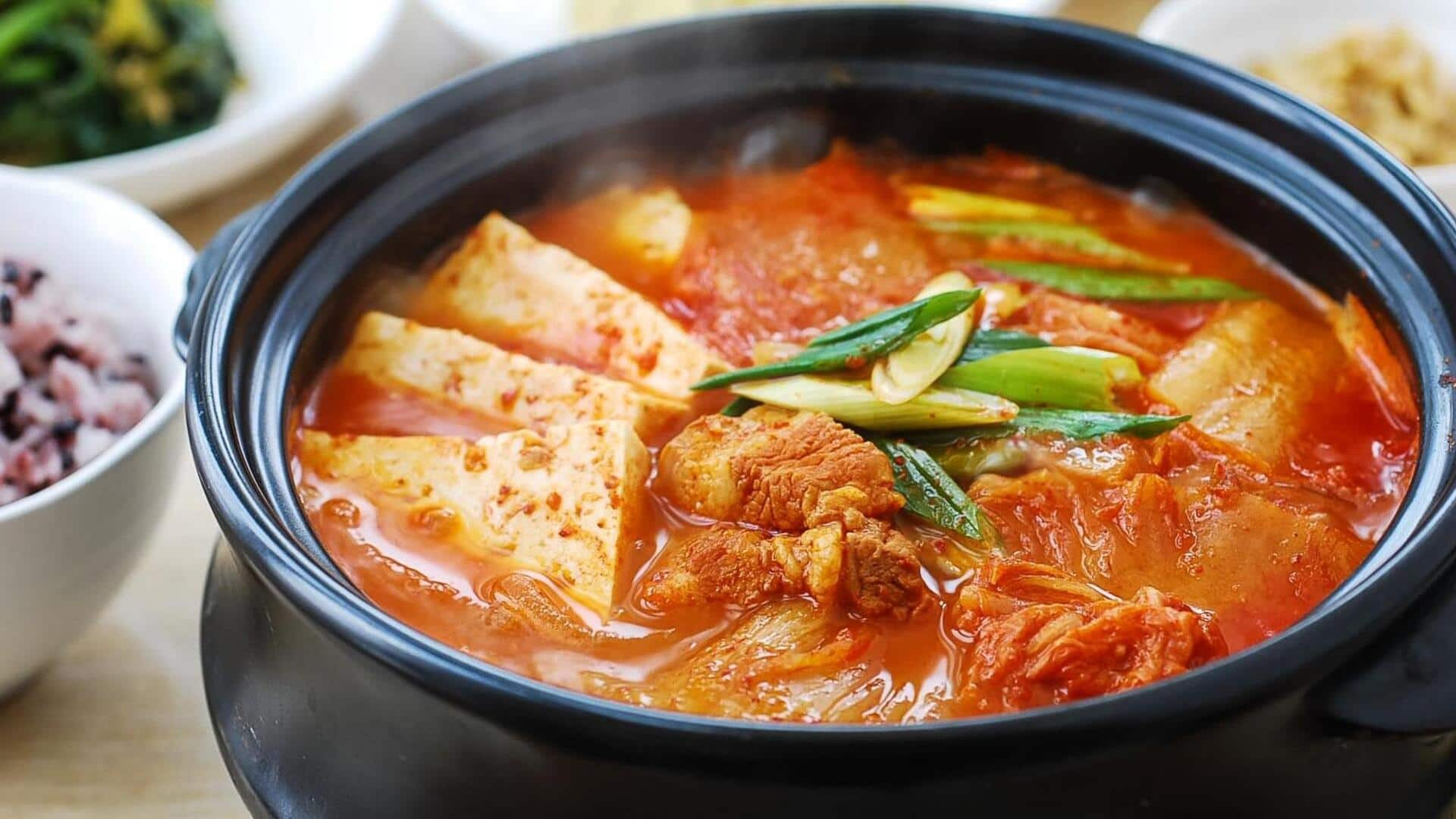
Try this Korean kimchi jjigae recipe
What's the story
Kimchi jjigae, a staple in Korean cuisine, is traditionally a spicy stew made with kimchi and other ingredients, tracing its origins to the Three Kingdoms of Korea. This dish, rich in history and cultural significance, is usually prepared with pork or seafood. Offering a vegetarian twist on the classic allows everyone to enjoy its bold flavors. Let's get cooking.
Ingredients list
Gather the following ingredients
For this vegetarian kimchi jjigae, gather two cups ripe vegan kimchi, one tablespoon gochujang (Korean chili paste), one tablespoon soy sauce, one tablespoon sesame oil, two cups vegetable broth, 200g firm tofu (cubed), one medium onion (sliced), two cloves garlic (minced), and two spring onions (chopped for garnish). Consider adding mushrooms or other vegetables for more texture.
Step 1
Prepare the base flavor
Heat sesame oil in a large pot over medium heat. Then, add the sliced onion and minced garlic, sauteing until they become soft and translucent. This initial step is crucial as it forms the base flavor for the stew. The onions should turn slightly golden but not browned, ensuring a sweet undertone that complements the spiciness of the kimchi perfectly.
Step 2
Add kimchi and seasonings
Once your onions are ready, add the vegan kimchi and its juice to the pot. The kimchi juice introduces acidity and depth to the jjigae. At this point, incorporate gochujang and soy sauce as well; these elements are key in crafting that authentic Korean flavor profile, which is known for its spicy kick complemented by a hint of sweetness and a rich umami backdrop.
Step 3
Pour in broth and simmer
After mixing the seasonings well with the kimchi, pour in two cups of vegetable broth. Then, bring your jjigae to a boil before reducing the heat for a gentle simmer. Allow it to simmer softly for about 15 minutes. This step is crucial as it lets all the flavors from the base ingredients meld together beautifully, enhancing the stew's overall taste and aroma.
Step 4
Add tofu and final touches
In the final step, add the cubed tofu to your gently simmering stew. This allows the tofu to absorb the rich flavors without disintegrating, making firm tofu the ideal choice for this recipe. After simmering for five minutes or once the tofu is thoroughly heated, conduct a taste test. Adjust the seasoning as needed before you turn off the heat, completing your dish.